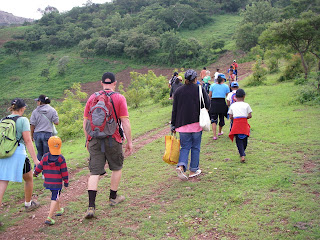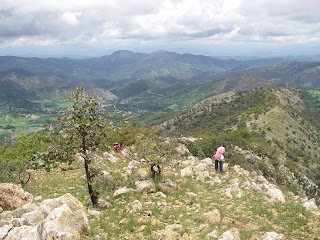It rains in San Cristobal, but it is not the rainy season rain like other places in Mexico. It is a cold, all day rain. Yesterday and today’s rains forced me to take refuge in the numerous coffee shops that litter San Cristobal’s quaint streets, each advertising the renowned coffee of Chiapas. I normally would not choose a large, but completely empty café; however, the Biomaya Café sells exclusively biomaya coffee.
Four years ago when I lived in Motozintla, Chiapas, for the summer, I worked with ASIAC, a cooperative of coffee growers, who was trying to get their coffee, branded biomaya, to a larger market. It was exciting to see that as of six months ago, this coffee cooperative, through Potpo, another local nonprofit organization, had a coffee shop in San Cristobal exclusively dedicated to selling biomaya coffee.
Gilberto, the lone server this afternoon, brought me my café con leche (coffee with milk), and stayed for conversation despite my open novel. It could have been my look of desperation for warmth or that I was the only person in the coffee shop or that Gilberto was bored and saw me as a captive audience. He showed off his English when he found out I was from the US, and told me that he would never forget the people he met during his nine years living in Arizona. He proudly presented the business card, which he keeps in his wallet, of the professional painters that he worked for in Phoenix.
Like many who I meet, he found it difficult to understand what a single woman was doing in Mexico, alone. I explained as best and as briefly as I could about the work of Mennonite Central Committee, which prompted the question of religion. I tried to place Mennonites in a framework that he might understand; “I’m an evangelico,” (evangelical or Protestant). Since it was Sunday and we could see the main cathedral through the drizzle, I asked him if he was Catholic. “No, I am Christian not Catholic.”
It is not the first time that I have heard this sentiment in Mexico, but I am always frustrated by how the catolicos (Catholics) and evangelicos (Protestants) have found a way to create more division than unity. In a country steeped in religious conflict that includes the forced conversion of many indigenous by Cortes and the Spanish in the 1500s to the 1917 Constitution and its anti-clerical laws and the counter revolution, the Cristero War, in the 1920s, the conflict continues in Chiapas today.
Gilberto told me that unlike the Catholics, he reads the Bible and believes in God. He was not at all convinced that the Catholic religion is also based on the Bible and the belief in God. He shared a common conversion story. Life before being Christian included drinking, being unfaithful to his wife and ignoring the responsibilities of family, and now he spends time with family and provides financially for their needs, through God’s blessing. I appreciated his fervor and faith, yet I struggled to convey to Gilberto the potential for shared passion with Catholics, fellow Christians on this journey of life.
With this recent conversation in mind, I discussed with Ernesto Martin, director of INESIN, an organization that works for interreligious dialogue, this constant conflict and tension between the evangelicos and catolicos, especially in Chiapas. Keeping in mind that he is a Nazarene pastor, he said that for many years Catholics emphasized the rites and rituals. People associated the Catholics with the rituals and the Pope, rather than God and the Bible. The Evangelical movement began preaching from the Bible and emphasizing the personal relationship with God. Some suggest that the Evangelical upsurge pushed the Catholics to begin preaching from the Bible.
Similar to Northern Ireland, another conflict clothed in religious tension, the situation in Chiapas has become political, based in a struggle for power. Political candidates support education or medical programs sponsored by evangelicals with the hope of winning votes. In the last ten years el Ejercito de Dios (God’s Army), basically a paramilitary group, has taken up arms to further the evangelical agenda and its political power. While the state is still predominantly Catholic, Evangelicals hold key political positions, though with elections on July 4, time will tell which Christian group will occupy the elected positions.
















































